Winter solstice
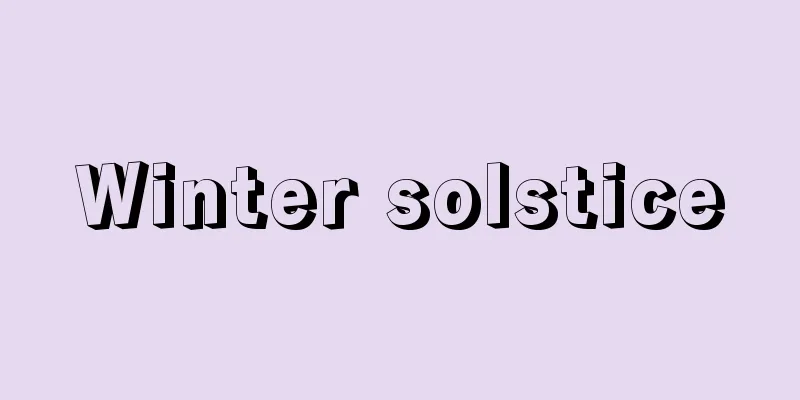
|
The southernmost point on the ecliptic, the path of the sun's movement across the celestial sphere, is called the winter solstice, and the time when the sun passes this point is the winter solstice. It is the time when the sun's apparent ecliptic longitude reaches 270 degrees, and its declination is minus 23 degrees 27 minutes. It is one of the 24 divisions of the Japanese and Chinese calendars, and occurs in November. It corresponds to around December 22nd in the solar calendar, and is the middle of winter. On this day, the sun's altitude at noon is at its lowest in the Northern Hemisphere, the day is the shortest, and the night is the longest. In the Southern Hemisphere, the opposite is true. In the Chinese and Japanese lunisolar calendars, the winter solstice is important as the starting point for calculating the calendar, but the vernal equinox plays an important role in estimating the astronomical calendar today. [Toshio Watanabe] weatherAccording to the calendar, this is halfway between the beginning of winter and the beginning of spring, but in reality the cold starts to get severe from this time onwards. A low pressure system that passes through between the winter solstice and about a week later, and which can bring the first snowfall on the Pacific side of the mainland, is called a year-end low pressure system. In many years, this year-end low pressure system turns into a turning point, and winter really sets in. In December before the winter solstice, the winter monsoon is weak and does not last long, so London-type winter smog used to occur around this time, but in recent years, soot from coal and other sources has decreased dramatically, and this type of smog has become less frequent. [Nemoto Junkichi] FolkloreOn this day, the sun's light weakens and plants become weak, bringing a kind of crisis to agricultural life, but it also marks the time when the daylight hours become longer again and a new sun begins to shine. Therefore, among peoples around the world, there is the idea that this day is a day to pray for the return of good weather and rebirth, and also the birthday of the sun. In China, the ceremony in which the emperor worships the heavens on the winter solstice is called the Jiaotian Ritual and is an important ceremony. It is also said that the Western Christmas originally had its background in the custom of celebrating the return of good weather. Globally, this day is believed to be the day when a sacred traveler who brings the power of the sun's return and the revival of agriculture arrives in the village, and in Japan, the legend that Kobo Daishi (Kōbō Daishi) visits the villages is widely passed down. The Daishi-ko event, in which red bean porridge and dumplings are made and offered, is held from the night of November 23rd on the lunar calendar until the following day. There is also a custom of eating pumpkins, known as "tōji unasu," or konnyaku, on the winter solstice, and it is said that eating pumpkins will prevent stroke. It is also common to take yuzu baths on this day. All of these rituals can be said to correspond to the idea of the winter solstice being a time of regeneration from weakness. [Naoki Shintani] "Annual Events" (included in "The Complete Works of Yanagita Kunio Vol. 13", 1963, Chikuma Shobo) "Annual Events" by Wakamori Taro (1957, Shibundo) [Reference] |Source: Shogakukan Encyclopedia Nipponica About Encyclopedia Nipponica Information | Legend |
|
太陽の天球上の運行径路である黄道上のもっとも南にある点を冬至点といい、太陽がこの点を通過する時刻が冬至である。太陽の視黄経が270度に達する時刻で、赤緯はマイナス23度27分である。日本、中国の暦の二十四節気の一つで11月中である。太陽暦の12月22日ころにあたり、冬季の真ん中である。この日の正午における太陽の高度は北半球ではもっとも低く、昼の長さはもっとも短く、夜の長さはもっとも長い。南半球ではこの反対となる。中国、日本の太陰太陽暦では冬至は暦の計算の起算点として重要なものであるが、今日の天文暦の推算は春分点が重要な役をもつ。 [渡辺敏夫] 気象暦のうえでは立冬と立春の真ん中にあたるが、実際の寒さはこのころから厳しくなる。冬至からその1週間後くらいまでの間に通過し、本土の太平洋側にも初雪を降らせることもある低気圧を年末低気圧という。この年末低気圧が一つの折れ目になって、本格的な冬に入る年が多い。冬至前の12月は冬の季節風も弱く、また持続せず、ロンドン型の冬のスモッグはこのころに集中しておこったが、最近は石炭などによる煤煙(ばいえん)が急激に減少したので、この型のスモッグは少なくなった。 [根本順吉] 民俗この日は太陽の光が弱まり植物も衰弱して農耕生活に一種の危機が訪れるとともに、またこの日からふたたび昼の日照時間が長くなり、新しい太陽が輝き始めるときでもある。したがって、世界の諸民族の間にも、この日を陽気の回復、再生を願う日、また太陽の誕生日とするような観念がうかがえる。中国では天子が冬至の日に天を祭るのを郊天の儀といい重要な儀式である。また西洋のクリスマスも、もとは陽気回復を祝う風習がその背景にあったのだといわれる。 世界的にこの日は一陽来復、農耕の再生の力をもたらす神聖な旅人が村にやってくる日と信じられ、日本では弘法大師(こうぼうだいし)が村を巡るという伝承が広く伝えられている。小豆粥(あずきがゆ)や団子をつくって供える大師講(こう)の行事がこの旧暦11月23日夜から翌日にかけてみられる。また、冬至とうなすなどといってカボチャを食べたり、コンニャクを食べる風習があり、カボチャを食べると中風(ちゅうぶ)にならないなどともいわれている。またこの日は柚湯(ゆずゆ)に入るという風も一般的である。いずれも衰弱からの再生という冬至をめぐる観念に呼応する儀礼といえよう。 [新谷尚紀] 『『年中行事』(『定本柳田国男集13』所収・1963・筑摩書房)』▽『和歌森太郎著『年中行事』(1957・至文堂)』 [参照項目] |出典 小学館 日本大百科全書(ニッポニカ)日本大百科全書(ニッポニカ)について 情報 | 凡例 |
Recommend
Sebillo
French folklorist. He started out as a notary in P...
Alpi - Alpi
… [Topography, Climate] A large mountain range th...
Eighteen - Ichihatsu
A perennial plant of the Iridaceae family. It grow...
Mount Koya - Koyasan
Koyasan Town, Ito District, Wakayama Prefecture, i...
auto-regression
…In reality, it is necessary to build a model fro...
Toyama Unjo
Year of death: May 16, 1863 (July 1, 1863) Year of...
Face
In vertebrates, the face refers to the front of t...
Sugawara Denju Tenarai Kagami - Sugawara Denju Tenarai Kagami
Joruri Gidayubushi. Historical piece. Five acts. ...
primary
...Large gliders were developed for transporting ...
Iris rossii (English spelling) Irisrossii
…[Tetsuichi Yahara]. … *Some of the terminology t...
Egyptian Mouse Breeder - Egyptian Mouse Breeder
… 【kinds】 Next, let's look at the characteris...
Fanal Color
…By making Rhodamine 3B into an insoluble lake wi...
Laternaria
...They are found mainly in tropical and subtropi...
"Z"trash - "Ztrash
In fact, Hammer Productions began to find a way t...
Kyokudo Nanryo
A lecturer. The name of Kyokudo was originally &q...

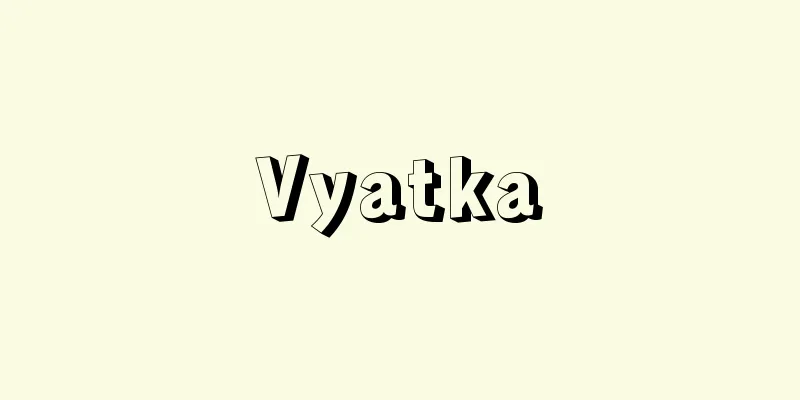
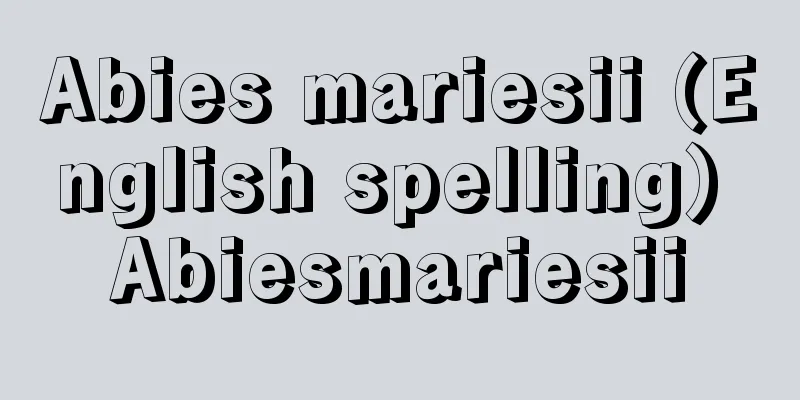

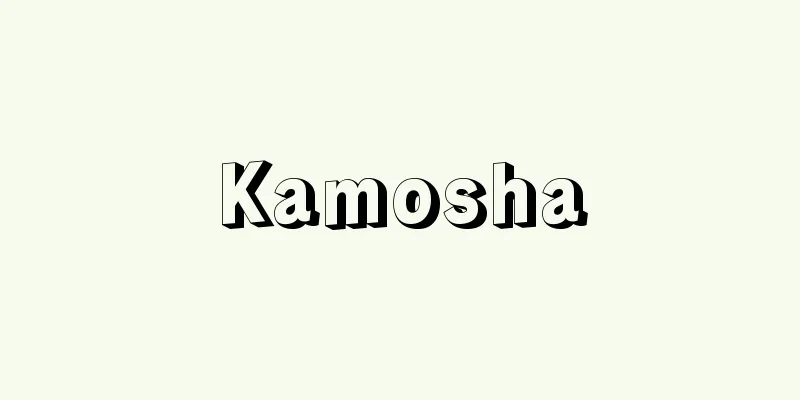


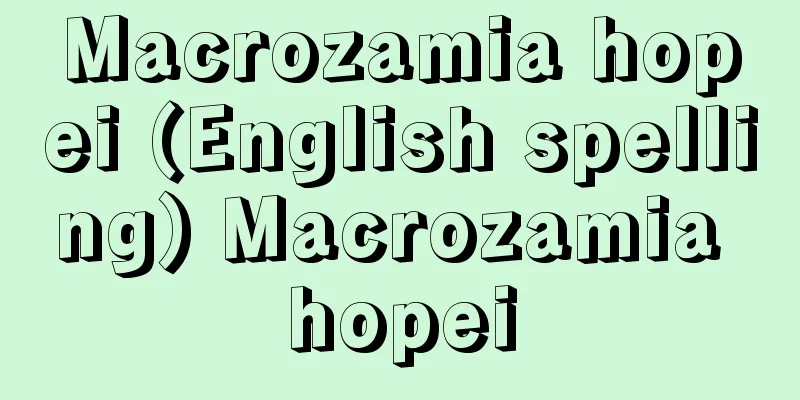
![Dordogne [river] - Dordogne](/upload/images/67cc5f2fcd9e6.webp)
